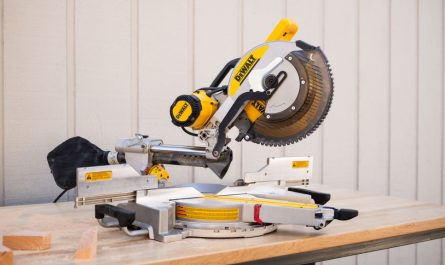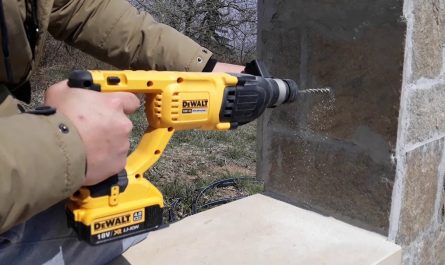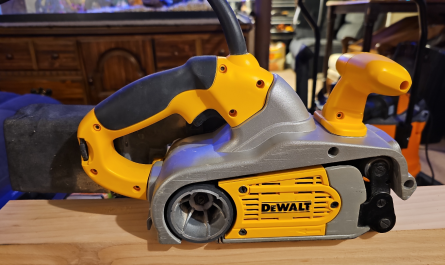In the fast-paced world of carpentry, efficiency and consistency are key. That’s why the nail gun (or nailer) has become an essential tool for professionals and DIYers alike. Replacing the traditional hammer and nails, the nail gun offers rapid fastening, reduced labor, and stronger holds, all with a pull of a trigger.
This article explores the evolution, types, technical specifications, and practical applications of nail guns in woodworking. Whether you’re framing a house or crafting fine furniture, understanding how to use a nail gun effectively can elevate your results and productivity.
History and Evolution of the Nail Gun
The first nail guns were developed in the 1950s, primarily for use in house framing. Early models were pneumatic (powered by compressed air) and aimed to reduce the time spent hammering each nail manually.
Over time, innovations introduced electric, cordless, and gas-powered models, making nail guns more portable, precise, and specialized. Today, there are nailers designed for everything from framing and roofing to finish carpentry and delicate trim work.
Types of Nail Guns and Their Applications
1. Framing Nailer

Description and Use:
Framing nailers are robust and powerful tools specifically designed for heavy-duty construction projects. They are engineered to drive large nails quickly and efficiently into tough materials like hardwood and engineered lumber. This makes them ideal for demanding tasks such as building houses, decks, and other structural frameworks where speed and strength are essential.
These tools are commonly used to secure framing components, including studs, joists, and rafters, forming the skeleton of a structure. Their power allows them to sink nails deep into dense wood without splitting it, ensuring a strong and reliable hold. Framing nailers can be powered by air (pneumatic), battery (cordless), or fuel, with each type offering different levels of mobility and power depending on the job site requirements.
In addition to structural framing, framing nailers are also useful for other construction tasks such as sheathing, subflooring, and fencing. By significantly reducing the time and physical effort needed to hammer in nails manually, they improve productivity and help maintain consistent nail placement. This consistency not only enhances structural integrity but also reduces material waste and rework, making them an essential tool for professionals and serious DIYers alike.
Technical Characteristics:
- Uses 30–90mm (1¼” to 3½”) nails
- Available in pneumatic and cordless models
- Fires round-head or clipped-head nails
- Sequential or bump firing modes
Price Range:
€150 – €400
2. Finish Nailer

Description and Use:
Finish nailers are precision tools designed for detailed woodworking and interior finish work. They drive smaller gauge nails—typically 15 or 16 gauge—that are ideal for attaching delicate trim, moldings, and other fine materials without causing splitting or noticeable surface damage. Their clean, unobtrusive nail heads make them perfect for applications where appearance matters.
These nailers are widely used in projects such as furniture building, cabinetry installation, baseboard fitting, and crown molding. Their ability to provide strong yet subtle fastening makes them essential for trim carpenters and interior finishers who require both functionality and finesse. Many finish nailers also feature depth adjustment controls, allowing users to set nails flush with or just below the surface, ready for easy filling and painting.
Because of their balance of power and precision, finish nailers are ideal for jobs where a standard framing nailer would be too aggressive. Whether you’re crafting a custom bookshelf or installing window casings, a finish nailer helps achieve a polished, professional look with efficiency and care. Their compact size and lightweight design also make them easy to maneuver in tight or awkward spaces.
Technical Characteristics:
- Typically uses 15 or 16-gauge nails
- Leaves small holes that are easy to fill
- Accurate and gentle on finished surfaces
- Often available as pneumatic or battery-powered
Price Range:
€100 – €300
3. Brad Nailer

Description and Use:
Brad nailers are compact and lightweight tools designed for precision fastening in delicate woodworking tasks. They use thinner 18-gauge brad nails, which are smaller and leave minimal marks on the surface—making them ideal for light trim, decorative accents, and attaching thin pieces of wood without splitting them. This makes brad nailers a go-to choice for fine finish work where appearance is key.
These tools are especially useful for tasks such as installing quarter round, picture frames, small moldings, and lightweight paneling. Because brad nails have smaller heads and lack the gripping power of larger nails, they are best used in applications where minimal holding strength is needed and adhesives or wood glue can supplement the bond. The discreet holes left behind are easy to fill and often require little to no sanding.
Brad nailers are a favorite among DIYers and professionals alike for their ease of use and ability to provide a clean, polished finish. Their small size and low recoil make them easy to control, even in tight spaces or on intricate projects. Whether you’re sprucing up a room with decorative trim or working on a craft project, a brad nailer offers accuracy without damaging the material.
Technical Characteristics:
- Uses 18-gauge brad nails, usually 10–50mm long
- Minimal splitting of delicate trim
- Compact, lightweight design for fine work
Price Range:
€60 – €200
4. Pin Nailer

Description and Use:
Pin nailers are ultra-precise fastening tools designed for the most delicate and detailed woodworking applications. They use extremely thin 23-gauge headless or slight-head nails, commonly referred to as «pins,» which leave virtually no visible hole in the material. This makes them ideal for attaching small decorative trim, delicate moldings, veneers, and intricate joinery where surface appearance is crucial.
Because pin nails are so fine, they offer minimal holding power on their own and are typically used in combination with wood glue or other adhesives. Their primary role is to hold pieces in place while the glue sets, ensuring precise alignment without the need for clamps or visible fasteners. This is especially useful in cabinetry, picture framing, and fine furniture making, where maintaining a clean finish is essential.
Pin nailers are favored by professionals for their ability to provide near-invisible fastening with pinpoint accuracy. Their small size and gentle operation make them easy to handle on fragile materials without risk of splitting or damage. Whether you’re working on a restoration project or adding decorative touches to a custom piece, a pin nailer delivers seamless results with professional finesse.
Technical Characteristics:
- Uses 23-gauge headless pins
- Extremely small holes, often invisible
- Great for delicate or temporary joins
Price Range:
€80 – €180
Common Applications in Carpentry
- House Framing: Framing nailers quickly join studs, headers, and beams.
- Trim & Finish Work: Brad and finish nailers allow clean attachment of baseboards, crown molding, window casings, and panels.
- Cabinetry & Furniture: Nail guns ensure accurate assembly with minimal surface blemishes.
- Flooring Installation: Specialized flooring nailers help fasten boards without damaging edges.
- Craft & Decorative Work: Pin nailers are great for lightweight materials and detailed woodworking.
Conclusion
The nail gun revolutionized carpentry by combining speed, consistency, and strength into one powerful tool. With a variety of specialized models—framing, finish, brad, and pin nailers—it’s easier than ever to tackle complex woodworking tasks with professional results.
By selecting the right type for your project, following safety best practices, and performing routine maintenance, your nail gun will become a reliable and efficient part of your workshop setup—saving you time and effort with every drive.



